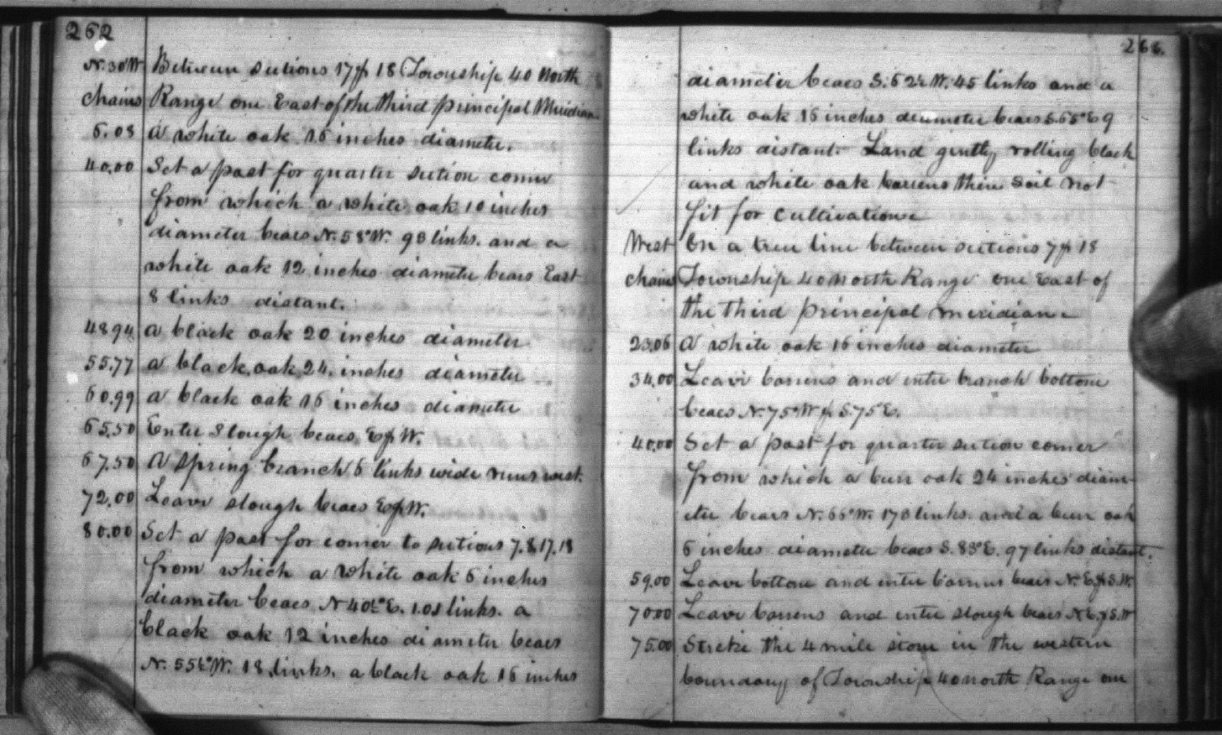We’re asking residents to visit the sites of bearing trees and record information about remaining witness trees left in Illinois using an interactive map.
We’re looking for a special kind of tree: the historic trees that helped map the state of Illinois.
In the early 1800s, surveyors used “bearing trees,” which is commonly known as a type of witness tree, many of them oaks, as landmarks. We want to know: How many of these trees survived as witnesses to history? To help, all you need is a smartphone. You don’t need to know anything about trees or maps to become part of this living history project.
We’re asking Illinois residents to visit the sites of bearing trees on their property or on public property and record information about any remaining bearing trees. If there is no tree in that spot, what is there now? Look for witness trees near you!
Why do we want to find these trees?
Most of the bearing trees were oaks. Finding these old oaks (and other trees) is valuable to CRTI’s efforts to implement the Oak Ecosystem Recovery Plan. Finding out what has replaced them is just as valuable.
You can glimpse history; imagine what the land and the tree was like in the early 1800s.
Please do not enter private property unless you have permission nor hike off maintained trails!
Surveyor field notebooks contain a wealth of information about what the landscape was like before European settlers arrived in the region.
Early in the 19th century, surveyors operating under the authority of the U.S. Surveyor General began surveying lands that would eventually comprise the State of Illinois.
Surveyors moved across the state laying out a rectangular grid system known as the Public Land Survey System (PLS or PLSS).
The surveyors kept notes about the quality of the landscape and other “remarkable and permanent things.” Where possible, they also identified three to four “bearing trees” at each corner and midpoint on the grid so that the spot could be found in the future (in areas with no trees, they would construct mounds of soil as markers). For each tree, they recorded its common name, location, and size.
The surveyors also recorded similar information for any tree that fell directly on the line of their survey grid (called “line trees”). These plat maps and field notebooks contain a wealth of information about what the landscape was like before settlers came into the state, a time when the majority of trees described were oak species.
Learn more:
A blog post on using the Illinois Public Land Survey Field Notes from Cassi Saari
Illinois plat maps from the 1800s
Illinois Public Land Survey data
Using the Public Land Survey data to understand our region’s early landscape
Vegetation of Northeastern Illinois in the 1800s
The map below includes the locations of the original bearing trees and line trees as recorded by the surveyors in the 1800s.
Click on a point to see more information about the species and the size as noted by the surveyor. There is also a place to record your own observations, including whether or not the tree is still there. You can also upload photos. Most points on the map are accurate to about 15 feet, so be sure to look nearby for very large trees that might fit the bill. While we can’t confirm whether a tree is the exact bearing tree, we can use information about the size, species, and location to determine whether a tree is likely the mapped bearing tree.
More data points will be added over time, so check back in 6 months.
Project Partners
The Morton Arboretum
The Field Museum
University of Notre Dame
The PalEON Project
US Geological Survey
Acknowledgements
The PLS data for Northeastern Illinois was transcribed by Marlin Bowles and Jenny McBride of The Morton Arboretum.
All other PLS data in Illinois was transcribed by 37 individuals from Jason McLachlan’s lab at the University of Notre Dame as part of the PalEON Project. This work was funded by the National Science Foundation grant DEB 1241874 and the Upper Midwest and Great Lakes Landscape Conservation Cooperative.

